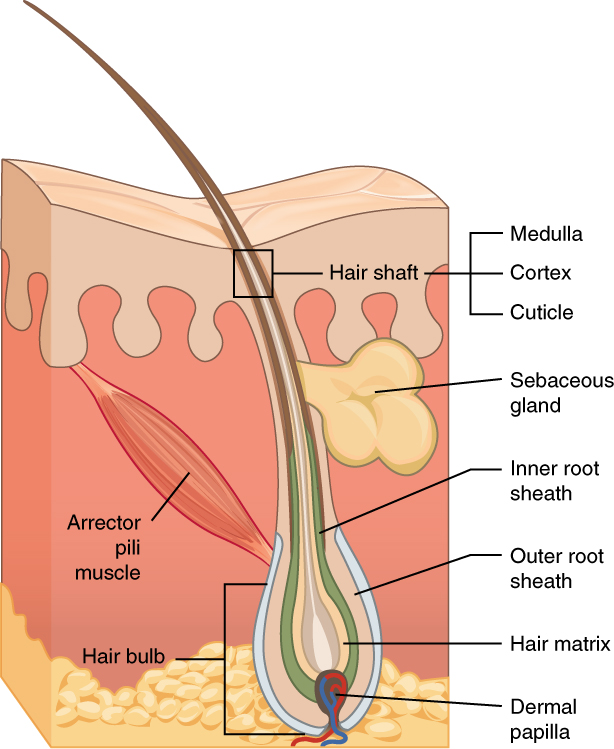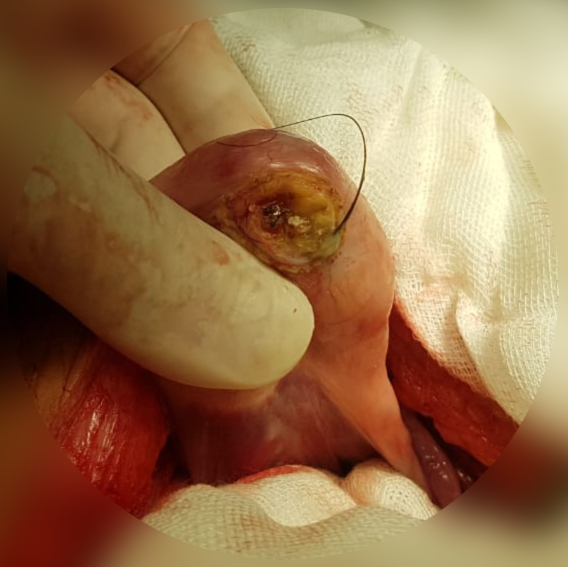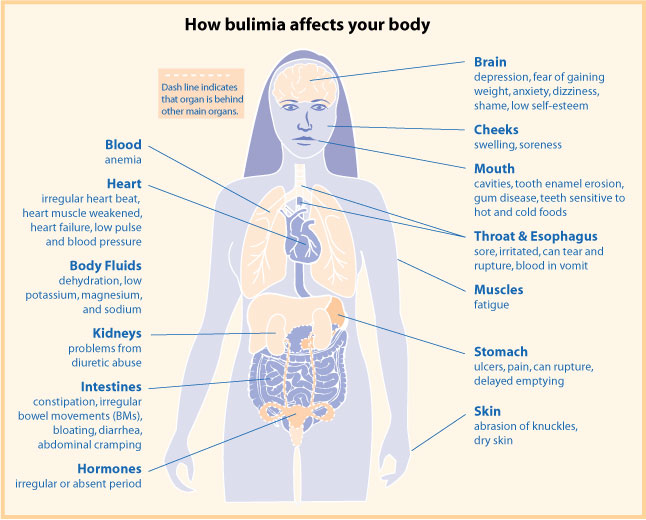|
Lanugo
Lanugo is very thin, soft, usually unpigmented hair that is sometimes found on the body of a fetus or newborn. It is the first hair to be produced by the fetal hair follicles, and it usually appears around sixteen weeks of gestation and is abundant by week twenty. It is normally shed before birth, around seven or eight months of gestation, but is sometimes present at birth. It disappears on its own within a few weeks. It is replaced by hair covering the same surfaces, which is called vellus hair. This hair is thinner and more difficult to see. The more visible hair that persists into adulthood is called terminal hair. It forms in specific areas and is hormone-dependent. The term is from the Latin '' lana'', meaning "wool." Humans Fetal development During human development, the lanugo grows on fetuses as a normal part of gestation, but it is usually shed and replaced by vellus hair at about thirty-three to thirty-six weeks of gestational age. As the lanugo is shed from the s ... [...More Info...] [...Related Items...] OR: [Wikipedia] [Google] [Baidu] |
Human Hair
Hair is a protein filament that grows from follicles found in the dermis. Hair is one of the defining characteristics of mammals. The human body, apart from areas of glabrous skin, is covered in follicles which produce thick terminal and fine vellus hair. Most common interest in hair is focused on hair growth, hair types, and hair care, but hair is also an important biomaterial primarily composed of protein, notably alpha-keratin. Attitudes towards different forms of hair, such as hairstyles and hair removal, vary widely across different cultures and historical periods, but it is often used to indicate a person's personal beliefs or social position, such as their age, gender, or religion. Overview Meaning The word "hair" usually refers to two distinct structures: #the part beneath the skin, called the hair follicle, or, when pulled from the skin, the bulb or root. This organ is located in the dermis and maintains stem cells, which not only re-grow the hair after it f ... [...More Info...] [...Related Items...] OR: [Wikipedia] [Google] [Baidu] |
Infant
In common terminology, a baby is the very young offspring of adult human beings, while infant (from the Latin word ''infans'', meaning 'baby' or 'child') is a formal or specialised synonym. The terms may also be used to refer to juveniles of other organisms. A newborn is, in colloquial use, a baby who is only hours, days, or weeks old; while in medical contexts, a newborn or neonate (from Latin, ''neonatus'', newborn) is an infant in the first 28 days after birth (the term applies to premature, full term, and postmature infants). Infants born prior to 37 weeks of gestation are called "premature", those born between 39 and 40 weeks are "full term", those born through 41 weeks are "late term", and anything beyond 42 weeks is considered "post term". Before birth, the offspring is called a fetus. The term ''infant'' is typically applied to very young children under one year of age; however, definitions may vary and may include children up to two years of age. When a human chi ... [...More Info...] [...Related Items...] OR: [Wikipedia] [Google] [Baidu] |
Vellus Hair
Vellus hair is short, thin, light-colored, and barely noticeable hair that develops on most of a human's body during childhood. Exceptions include the lips, the back of the ear, the palm of the hand, the sole of the foot, some external genital areas, the navel, and scar tissue. The density of hair – the number of hair follicles per area of skin – varies from person to person. Each strand of vellus hair is usually less than 2 mm (1/13 inch) long and the follicle is not connected to a sebaceous gland. Vellus hair is most easily observed on children and adult women, who generally have less terminal hair to obscure it. Vellus hair is not lanugo hair. Lanugo hair is a much thicker type of hair that normally grows only on fetuses. Vellus hair is differentiated from the more visible terminal or androgenic hair, which develops only during and after puberty, usually to a greater extent on men than it does on women. The Latin language uses the word ''vellus'' to designate "a f ... [...More Info...] [...Related Items...] OR: [Wikipedia] [Google] [Baidu] |
Anorexia Nervosa
Anorexia nervosa (AN), often referred to simply as anorexia, is an eating disorder characterized by Calorie restriction, food restriction, body image disturbance, fear of gaining weight, and an overpowering desire to be thin. Individuals with anorexia nervosa have a fear of being overweight or being seen as such, despite the fact that they are typically underweight. The DSM-5 describes this perceptual symptom as "disturbance in the way in which one's body weight or shape is experienced". In research and clinical settings, this symptom is called "body image disturbance" or Body dysmorphic disorder, body dysmorphia. Individuals with anorexia nervosa also often deny that they have a problem with low weight due to their altered perception of appearance. They may weigh themselves frequently, eat small amounts, and only eat certain foods. Some patients with anorexia nervosa Binge eating, binge eat and Purging disorder, purge to influence their weight or shape. Purging can manifest a ... [...More Info...] [...Related Items...] OR: [Wikipedia] [Google] [Baidu] |
Hair
Hair is a protein filament that grows from follicles found in the dermis. Hair is one of the defining characteristics of mammals. The human body, apart from areas of glabrous skin, is covered in follicles which produce thick terminal and fine vellus hair. Most common interest in hair is focused on hair growth, hair types, and hair care, but hair is also an important biomaterial primarily composed of protein, notably alpha-keratin. Attitudes towards different forms of hair, such as hairstyles and hair removal, vary widely across different cultures and historical periods, but it is often used to indicate a person's personal beliefs or social position, such as their age, gender, or religion. Overview Meaning The word "hair" usually refers to two distinct structures: #the part beneath the skin, called the hair follicle, or, when pulled from the skin, the bulb or root. This organ is located in the dermis and maintains stem cells, which not only re-grow the hair afte ... [...More Info...] [...Related Items...] OR: [Wikipedia] [Google] [Baidu] |
Meconium
Meconium is the earliest stool of a mammalian infant resulting from defecation. Unlike later feces, meconium is composed of materials ingested during the time the infant spends in the uterus: intestinal epithelial cells, lanugo, mucus, amniotic fluid, bile, and water. Meconium, unlike later feces, is viscous and sticky like tar – its color usually being a very dark olive green and it is almost odorless. When diluted in amniotic fluid, it may appear in various shades of green, brown, or yellow. It should be completely passed by the end of the first few days after birth, with the stools progressing toward yellow (digested milk). Clinical significance Meconium in amniotic fluid Meconium is normally retained in the infant's bowel until after birth, but sometimes it is expelled into the amniotic fluid prior to birth or during labor and delivery. The stained amniotic fluid is recognized by medical staff as a possible sign of fetal distress. Some post-dates pregnancies ... [...More Info...] [...Related Items...] OR: [Wikipedia] [Google] [Baidu] |
Mammal
A mammal () is a vertebrate animal of the Class (biology), class Mammalia (). Mammals are characterised by the presence of milk-producing mammary glands for feeding their young, a broad neocortex region of the brain, fur or hair, and three Evolution of mammalian auditory ossicles, middle ear bones. These characteristics distinguish them from reptiles and birds, from which their ancestors Genetic divergence, diverged in the Carboniferous Period over 300 million years ago. Around 6,640 Neontology#Extant taxon, extant species of mammals have been described and divided into 27 Order (biology), orders. The study of mammals is called mammalogy. The largest orders of mammals, by number of species, are the rodents, bats, and eulipotyphlans (including hedgehogs, Mole (animal), moles and shrews). The next three are the primates (including humans, monkeys and lemurs), the Artiodactyl, even-toed ungulates (including pigs, camels, and whales), and the Carnivora (including Felidae, ... [...More Info...] [...Related Items...] OR: [Wikipedia] [Google] [Baidu] |
Teratoma
A teratoma is a neoplasia, tumor made up of several types of biological tissue, tissue, such as hair, muscle, Human tooth, teeth, or bone. Teratomata typically form in the tailbone (where it is known as a sacrococcygeal teratoma), ovary, or testicle. Symptoms Symptoms may be minimal if the tumor is small. A testicular teratoma may present as a painless lump. Complications may include ovarian torsion, testicular torsion, or hydrops fetalis. They are a type of germ cell tumor (a tumor that begins in the cells that give rise to sperm or egg cell, eggs). They are divided into two types: mature and immature. Mature teratomas include dermoid cysts and are generally benign tumor, benign. Immature teratomas may be cancerous. Most ovarian teratomas are mature. In adults, testicular teratomas are generally cancerous. Definitive diagnosis is based on a tissue biopsy. Treatment of coccyx, testicular, and ovarian teratomas is generally by surgery. Testicular and immature ovarian terato ... [...More Info...] [...Related Items...] OR: [Wikipedia] [Google] [Baidu] |
Bulimia Nervosa
Bulimia nervosa, also known simply as bulimia, is an eating disorder characterized by binge eating (eating large quantities of food in a short period of time, often feeling out of control) followed by compensatory behaviors, such as self-induced vomiting or fasting, to prevent weight gain. Other efforts to lose weight may include the use of diuretics, laxatives, stimulants, water fasting, or excessive exercise. Most people with bulimia are at normal weight and have higher risk for other mental disorders, such as depression, anxiety, borderline personality disorder, bipolar disorder, and problems with drugs to alcohol. There is also a higher risk of suicide and self-harm. Bulimia is more common among those who have a close relative with the condition. The percentage risk that is estimated to be due to genetics is between 30% and 80%. Other risk factors for the disease include psychological stress, cultural pressure to attain a certain body type, poor self-esteem, and obes ... [...More Info...] [...Related Items...] OR: [Wikipedia] [Google] [Baidu] |
Thermal Insulation
Thermal insulation is the reduction of heat transfer (i.e., the transfer of thermal energy between objects of differing temperature) between objects in thermal contact or in range of radiative influence. Thermal insulation can be achieved with specially engineered methods or processes, as well as with suitable object shapes and materials. Heat flow is an inevitable consequence of contact between objects of different temperature. Thermal insulation provides a region of insulation in which thermal conduction is reduced, creating a thermal break or thermal barrier, or thermal radiation is reflected rather than absorbed by the lower-temperature body. The insulating capability of a material is measured as the inverse of thermal conductivity, thermal conductivity (k). Low thermal conductivity is equivalent to high insulating capability (R-value (insulation), resistance value). In thermal engineering, other important properties of insulating materials are product density, density (ρ) ... [...More Info...] [...Related Items...] OR: [Wikipedia] [Google] [Baidu] |
Vernix Caseosa
Vernix caseosa, also known as vernix, is the waxy white substance found coating the skin of newborn human babies. It is produced by dedicated cells and is thought to have some protective roles during fetal development and for a few hours after birth. Etymology In Latin, ''vernix'' means ''varnish'' and ''caseosa'' means ''cheesy''. The term was first published in 1846 in the ''Dunglison Dictionary of Medical Sciences''. In-utero development Vernix is produced during a distinct phase of the epidermal development. Around the 21st week of gestation, periderm cells are being shed and replaced with stratum corneum; these shedding mix with secretions of sebum by the sebaceous glands to form vernix, which gradually covers the body in an anteroposterior and dorsoventral pattern. Vernix, in itself, is also believed to aid in the formation of stratum corneum. By early third trimester, the process is complete. Soon enough, part of the vernix is emulsified by increasing concentrations ... [...More Info...] [...Related Items...] OR: [Wikipedia] [Google] [Baidu] |
Premature Birth
Preterm birth, also known as premature birth, is the birth of a baby at fewer than 37 weeks gestational age, as opposed to full-term delivery at approximately 40 weeks. Extreme preterm is less than 28 weeks, very early preterm birth is between 28 and 32 weeks, early preterm birth occurs between 32 and 34 weeks, late preterm birth is between 34 and 36 weeks' gestation. These babies are also known as premature babies or colloquially preemies (American English) or premmies (Australian English). Symptoms of preterm labor include uterine contractions which occur more often than every ten minutes and/or the leaking of fluid from the vagina before 37 weeks. Premature infants are at greater risk for cerebral palsy, delays in development, hearing problems and problems with their vision. The earlier a baby is born, the greater these risks will be. The cause of spontaneous preterm birth is often not known. Risk factors include diabetes, high blood pressure, multiple gestation (being ... [...More Info...] [...Related Items...] OR: [Wikipedia] [Google] [Baidu] |






